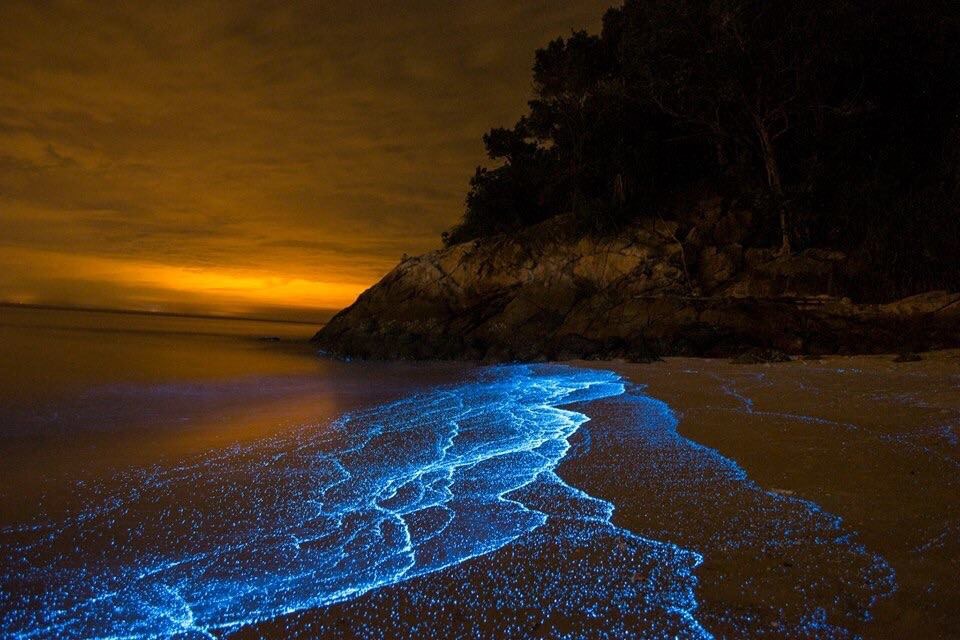IPOH, March 20 — Pulau Sembilan, a cluster of nine islands off Perak, has been declared off-limits because of public apathy and environment degradation.
Tourism and culture committee chairman Datuk Nolee Ashilin Mohd Radzi told Malay Mail the state government decided to impose the ban on tourists flocking to the islands as overcrowding had brought negative effects to environment sustainability.
“Pulau Sembilan will be officially closed for an indefinite period from April 1 due to ‘excessive tourism’,” she said.
Nolee declined to elaborate what the negative effects were but industry sources brought to light the shocking revelation of how visitors would wade into the sea and scoop plankton known as Blue Tears to take pictures.
The luminescent Blue Tears plankton are discovered in abundance along the coastlines of two of the islands — Pulau Lalang and Pulau Rumbia — after dusk. This phenomenon, for the past 10 years has been the pull factor which brought visitors to the uninhabited islands.
“We are closing the islands because we are concerned about conservation. At the moment, there is no control on the number of visitors who can make their way to the island despite the state having imposed a 120-visitor per daily limit,” Nolee said.
“There have been times, we learnt, between 300 and 400 people were on the islands each day.
“The presence of such a large crowd also damages the pristine white sand and this was evident with discolouration noted on the beach. The beach surface has changed to a darker shade.”
She said the plankton on the islands’ coastline could move away if their natural habitat was disturbed.

On the breach of the 120-visitor limit, Nolee said the state was aware of the number allowed to visit as daily travelling licences were issued by the Perak State Parks Corporation with the assistance of boat operators and tours agents promoting island tours.
“The overcrowding occurred as visitors trespassed on the islands without licences and using unauthorised boats,” she said.
“The Perak State Parks Corporation could not take action as they don’t have an enforcement unit.”
With the travel ban imposed, the state government will monitor movements to the islands with cooperation from marine enforcement authorities.
“We will re-evaluate this decision later with a view on how best tourism can be promoted there,” Nolee said.
“We do not have a specific date on when the islands will be reopened but we will try to open them as soon as possible as we understand they are a major tourist destination.”
Nolee said there would not be any structural development on the islands as the authorities wanted to keep them as natural as possible.
“We will be seeking advice and assistance from non-governmental organisations and conversational experts,” she said.
In January, Deputy Prime Minister Datuk Seri Ahmad Zahid Hamidi said there would be no physical development at the Pulau Sembilan State Park, as this had been decreed by the Sultan of Perak, Sultan Nazrin Shah, and agreed upon by Mentri Besar Datuk Seri Zambry Abd Kadir.
“Any physical development has to be carried out on the mainland at Bagan Datuk, while Pulau Sembilan will just be a stopover (for tourists),” he had said after the declaration of Bagan Datuk as the 12th district of Perak.
Ahmad Zahid, who is also the Bagan Datuk MP, added: “Tourists like to go to Pulau Sembilan because of the blue plankton phenomenon which only occurs in seven locations in the world.”
Besides Pulau Lalang and Pulau Rumbia, this unique phenomenon is also sighted around Pulau Agas, Pulau Batutimbul, Pulau Payong, Pulau Nipis, Pulau Batutimbul Rosa, Pulau Saga and Pulau Buluh, although not as frequent as the popular two destinations.
Besides the Blue Tears phenomenon, marine life such as simulate octopus, adolescent bamboo sharks, seahorses, nudibranchs, juvenile yellow boxfish, juvenile blue-ringed angelfish, butterfly fish, long-finned bannerfish, blue-ringed angelfish, groupers and tuna are rich in waters surrounding the islands.
The waters are also abundant with coral reefs which consist of large and little nudibranchs, staghorn coral reefs, tube coral reefs, whip coral reefs, barrel sponges, and lively soft reefs.



















